What is considered a high liver enzyme. Understanding High Liver Enzymes: Causes, Symptoms, and Treatment Options
What are considered high liver enzyme levels. How do liver enzymes affect your health. What causes elevated liver enzymes. How are high liver enzymes diagnosed and treated. What lifestyle changes can help lower liver enzyme levels.
What Are Liver Enzymes and Why Are They Important?
Liver enzymes are proteins produced by liver cells that play crucial roles in various metabolic processes. The most commonly tested liver enzymes include:
- Alanine transaminase (ALT)
- Aspartate transaminase (AST)
- Alkaline phosphatase (ALP)
- Gamma-glutamyl transpeptidase (GGT)
These enzymes are normally found within liver cells. When liver cells are damaged or inflamed, these enzymes leak into the bloodstream, causing elevated levels in blood tests. Monitoring liver enzyme levels helps healthcare providers assess liver health and function.
Normal Liver Enzyme Ranges
Reference ranges for liver enzymes can vary slightly between laboratories, but generally fall within these parameters:

| Enzyme | Male Range | Female Range |
|---|---|---|
| AST | 10 – 40 U/L | 10 – 35 U/L |
| ALT | 9 – 46 U/L | 6 – 29 U/L |
| ALP | 40 – 115 U/L | 33 – 130 U/L |
| GGT | 3 – 95 U/L | 3 – 70 U/L |
Understanding Elevated Liver Enzymes
Elevated liver enzymes occur when levels exceed the normal range. But what exactly constitutes “high” liver enzymes? Mild elevations are typically considered to be less than 2-3 times the upper limit of normal. Moderate elevations range from 3-10 times the upper limit, while severe elevations exceed 10 times the normal range.
It’s important to note that slightly elevated liver enzymes don’t always indicate severe liver damage. In many cases, mild elevations may be temporary or caused by factors unrelated to liver disease. However, persistent or significant elevations warrant further investigation.
Common Causes of Elevated Liver Enzymes
Various factors can contribute to increased liver enzyme levels:
- Non-alcoholic fatty liver disease (NAFLD)
- Alcoholic liver disease
- Viral hepatitis (hepatitis A, B, C)
- Medications (e.g., statins, acetaminophen)
- Obesity
- Autoimmune disorders
- Certain genetic conditions
Non-Alcoholic Fatty Liver Disease (NAFLD): A Silent Epidemic
Non-alcoholic fatty liver disease (NAFLD) is becoming increasingly prevalent in modern society. This condition occurs when excess fat accumulates in liver cells, leading to inflammation and potential liver damage. NAFLD is often associated with obesity, insulin resistance, and metabolic syndrome.

Why is NAFLD considered a “silent” epidemic? Many individuals with NAFLD experience no symptoms in the early stages, and the condition is often discovered incidentally during routine blood tests or imaging studies. Left untreated, NAFLD can progress to more severe forms of liver disease, including non-alcoholic steatohepatitis (NASH) and cirrhosis.
The Link Between NAFLD and Insulin Resistance
Insulin resistance plays a significant role in the development of NAFLD. When cells become resistant to insulin, the body produces more insulin to compensate. High insulin levels promote fat storage in the liver, leading to fatty liver disease. Additionally, diets high in sugar and fructose can exacerbate this process, as the liver metabolizes fructose directly, potentially contributing to fat accumulation and liver damage.
Symptoms and Complications of Elevated Liver Enzymes
In many cases, slightly elevated liver enzymes may not cause noticeable symptoms. However, as liver damage progresses, individuals may experience:
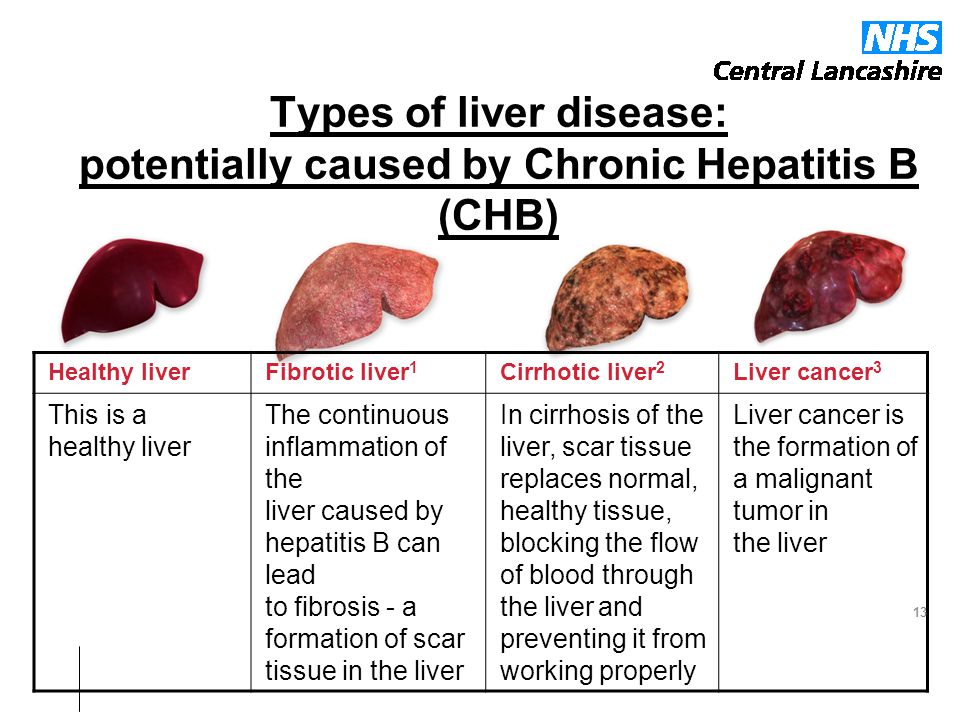
- Fatigue
- Abdominal pain or discomfort, particularly in the upper right quadrant
- Unexplained weight loss or gain
- Jaundice (yellowing of the skin and eyes)
- Nausea or loss of appetite
- Dark urine or pale stools
Persistent elevation of liver enzymes can lead to various complications if left untreated:
- Cirrhosis (scarring of the liver)
- Liver failure
- Increased risk of liver cancer
- Portal hypertension
- Hepatic encephalopathy
Diagnosing the Cause of Elevated Liver Enzymes
When liver enzymes are found to be elevated, healthcare providers typically follow a step-wise approach to determine the underlying cause:
- Medical history and physical examination
- Review of medications and alcohol consumption
- Additional blood tests (e.g., viral hepatitis markers, autoimmune antibodies)
- Imaging studies (ultrasound, CT scan, or MRI)
- Liver biopsy (in some cases)
It’s important to note that mildly elevated liver enzymes may not always prompt immediate extensive testing. In some cases, doctors may recommend a “watch and wait” approach, repeating blood tests after a few weeks to see if the elevation persists.
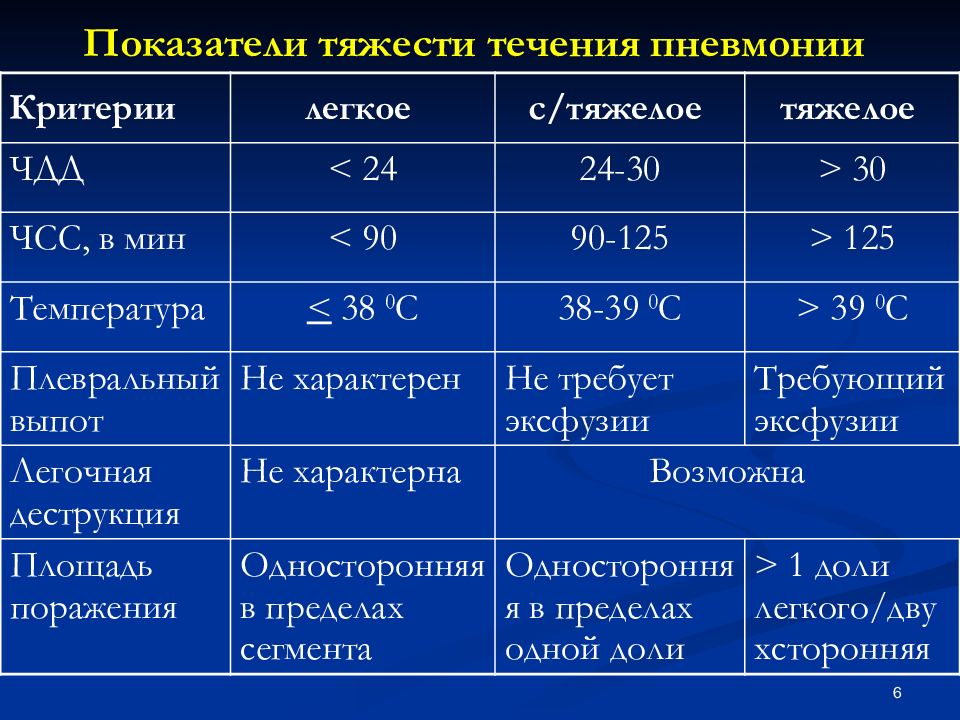
Treatment Options for Elevated Liver Enzymes
The treatment for elevated liver enzymes depends on the underlying cause. In many cases, addressing the root cause can help normalize enzyme levels and improve liver health.
Lifestyle Modifications
For many individuals, especially those with NAFLD or alcohol-related liver disease, lifestyle changes can significantly improve liver health:
- Weight loss (if overweight or obese)
- Regular exercise (aim for at least 150 minutes of moderate-intensity activity per week)
- Limiting or avoiding alcohol consumption
- Adopting a balanced, nutrient-rich diet
- Reducing intake of added sugars and refined carbohydrates
- Managing stress through relaxation techniques or mindfulness practices
Medications and Medical Interventions
In some cases, medication or medical interventions may be necessary:
- Treatment for viral hepatitis (antiviral medications)
- Management of autoimmune liver diseases (immunosuppressants)
- Addressing underlying metabolic conditions (e.g., diabetes medications)
- Liver transplantation (in severe cases of liver failure)
Preventing Elevated Liver Enzymes and Promoting Liver Health
While some causes of elevated liver enzymes are unavoidable, there are several steps individuals can take to promote liver health and reduce the risk of liver damage:
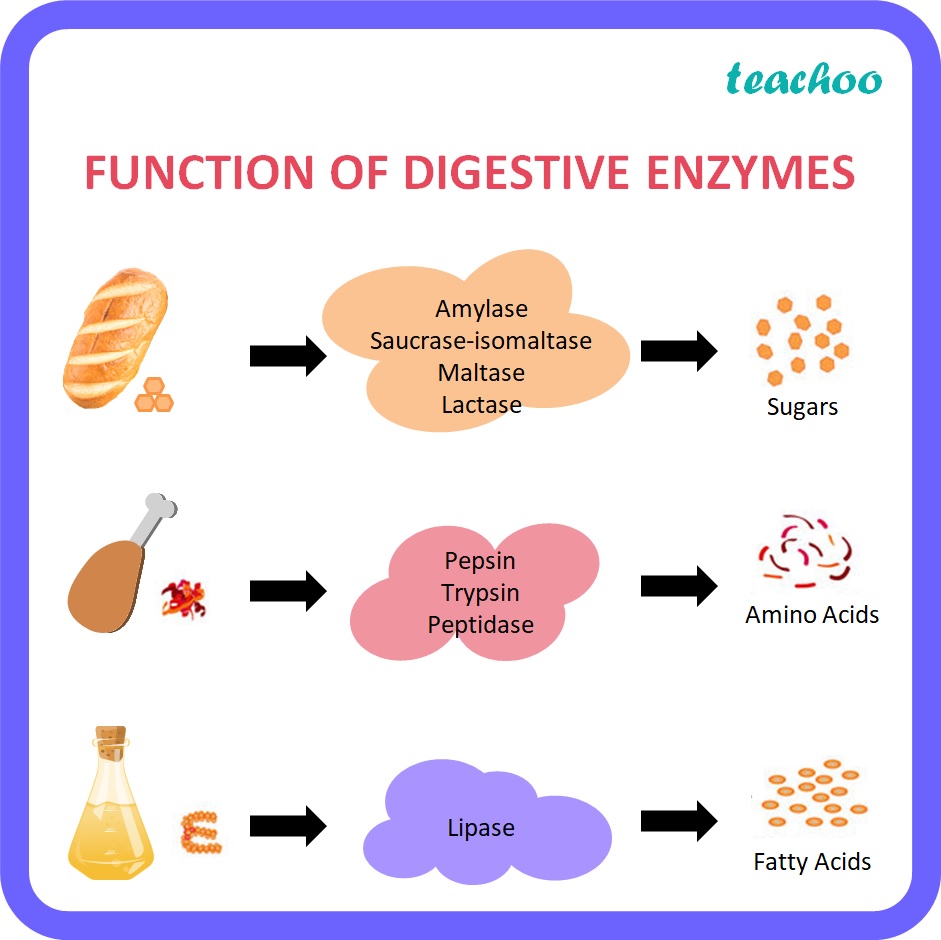
- Maintain a healthy weight
- Limit alcohol consumption
- Practice safe sex and avoid sharing needles to prevent viral hepatitis
- Get vaccinated against hepatitis A and B
- Use medications, including over-the-counter drugs, as directed
- Avoid exposure to toxins and chemicals
- Manage chronic conditions like diabetes and high cholesterol
The Importance of Regular Liver Function Monitoring
Regular monitoring of liver enzymes through blood tests can help detect potential liver problems early. This is particularly important for individuals with risk factors for liver disease, such as:
- Obesity
- Diabetes
- History of excessive alcohol consumption
- Family history of liver disease
- Use of certain medications
Early detection of elevated liver enzymes allows for prompt intervention, potentially preventing more serious liver damage and complications.
When to Seek Medical Attention
While slightly elevated liver enzymes may not always require immediate medical attention, certain symptoms warrant prompt evaluation by a healthcare provider:

- Severe abdominal pain
- Jaundice (yellowing of the skin or eyes)
- Dark urine or pale stools
- Unexplained weight loss
- Persistent fatigue or weakness
- Easy bruising or bleeding
These symptoms could indicate more severe liver problems and should be assessed by a medical professional.
Emerging Research and Future Directions in Liver Health
The field of hepatology is rapidly evolving, with ongoing research into new diagnostic tools, treatment options, and preventive strategies for liver diseases. Some areas of current interest include:
- Non-invasive biomarkers for liver fibrosis and NASH
- Novel therapies for NAFLD and NASH
- Personalized medicine approaches to liver disease management
- The role of the gut microbiome in liver health
- Artificial intelligence applications in liver disease diagnosis and prognosis
As our understanding of liver function and disease mechanisms continues to grow, we can expect more targeted and effective approaches to managing elevated liver enzymes and promoting overall liver health.
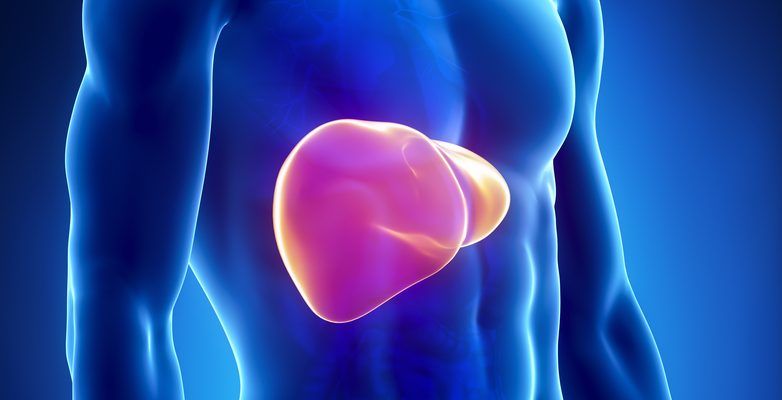
Conclusion: Taking Control of Your Liver Health
Elevated liver enzymes serve as an important indicator of liver health, alerting us to potential issues before they become severe. While slightly elevated enzymes don’t always signify serious liver disease, they should not be ignored. By understanding the causes, symptoms, and treatment options for elevated liver enzymes, individuals can take proactive steps to protect their liver health.
Remember, the liver has a remarkable ability to regenerate and heal itself when given the proper care. Through lifestyle modifications, regular check-ups, and prompt attention to any concerning symptoms, you can support your liver’s vital functions and maintain overall health and well-being.
If you have concerns about your liver enzyme levels or liver health, don’t hesitate to consult with a healthcare provider. They can provide personalized guidance and help you develop a plan to optimize your liver function and overall health.
What Does slightly Elevated Liver Enzymes Mean?
You are here: Home / Podcast Episodes / What Does Slightly Elevated Liver Enzymes Mean? PYHP 041
Dr. Maki
What Are Liver Enzymes?
Liver Enzymes are made by cells throughout the body but are found in highest concentrations in liver cells. These enzymes are found inside liver cells, so when the concentration is elevated in the blood, usually indicates liver cells (hepatocytes) are inflamed, damaged for dying. Below is a list of the four common liver enzymes that are routinely tested on an annual basis or monitored due to certain medications, such as Statin drugs and acetaminophen.
Liver Enzymes:
- Alanine transaminase (ALT) / Serum Glutamic-Pyruvic Transaminase (SGPT)
- Aspartate transaminase (AST) / Serum Glutamic-Oxaloacetic Transaminase (SGOT)
- Alkaline phosphatase (ALP)
- Gamma-glutamyl transpeptidase (GGT)
Liver Enzyme Reference Range: (Quest Diagnostics)
Liver Enzyme Test | Male | Female |
AST | 10 – 40 U/L | 10 – 35 U/L |
ALT | 9 – 46 U/L | 6 – 29 U/L |
| ALP | 40 – 115 U/L | 33 – 130 U/L |
GGT | 3 – 95 U/L | 3 – 70 U/L |
What Does Slightly Elevated Liver Enzymes Mean?
Something we have consistently observed with our patients over the past ten years is slightly elevated liver enzymes. Specifically, a slight elevation to AST and ALT.
Specifically, a slight elevation to AST and ALT.
For example, on a routine Comprehensive Metabolic Panel (CMP), a woman will have an AST level of 54 U/L and an ALT level of 47 U/L. Both enzymes are slightly outside the normal range, but this often gets blown off by the primary care physician because the liver enzyme levels are not high enough to indicate major a concern. However, if the enzymes levels were in the hundreds, then the doctor would do some follow-up testing for some liver disease like Hepatitis.
Slightly elevated liver enzymes is an indication of having a fatty liver. Most people do not even know they have a fatty liver. And it is found incidentally on an ultrasound. A typical scenario is having a gallbladder attack. You wake up in the middle of the night with terrible stomach pain, radiating to the right side or even the right scapula. Many people have ended up in the emergency room in the middle of the night for a gallbladder attack. In the emergency room, an ultrasound of the abdomen is done. The doctor will tell you that you have gallstones and schedule you for surgery. Then in passing they will remark that you have a fatty liver and that is the last you will hear of that.
The doctor will tell you that you have gallstones and schedule you for surgery. Then in passing they will remark that you have a fatty liver and that is the last you will hear of that.
Conventional Approach:
If your liver enzymes are slightly elevated, your doctor will most likely not even address it. Below is a list of the conventional approaches that are taken when the liver enzymes are just outside the normal ranges.
- Watch and wait
- Looking for Hepatitis
- Levels are not high enough, so Dr typically don’t do anything
- Liver Ultrasound will confirm fatty liver disease
What is Non-Alcoholic Fatty Liver Disease (NAFLD)
If your liver enzymes are elevated, then you have, or you are on the way to having a fatty liver. When the liver enzymes are found elevated on blood work, most doctors will ask how much are you drinking and tell you to cut down. People with NAFLD have a fatty liver, but it is not due to alcohol intake. I have had many patients say their doctor will not believe they don’t drink. This is called Non-Alcoholic Fatty Liver Disease, abbreviated as NAFLD (pronounced ‘Na-Fold’).
I have had many patients say their doctor will not believe they don’t drink. This is called Non-Alcoholic Fatty Liver Disease, abbreviated as NAFLD (pronounced ‘Na-Fold’).
One of the most significant contributors to fatty liver is high levels of insulin. Having a diet high in sugar will raise insulin. Insulin is supposed to tell the body to store fat in adipocytes (fat cells). When there is a lot of insulin, the liver will start storing the fat into the hepatocytes (liver cell). Over time the liver becomes fatty, and the liver enzymes will begin to rise.
The liver metabolizes fructose. Having a lot of high fructose corn syrup is especially hard on the liver. Because high fructose corn syrup will skyrocket insulin and the liver has to work extra hard at metabolizing it. NAFLD usually gets dismissed by doctors. I think that is because there is no medication for fatty liver. If there is not a medication for it, then most docs do not know how to treat it.
People often ask me:
- Is fatty liver going to hurt me?
- Can I get liver cancer from fatty liver?
- Are elevated liver enzymes something I need to be concerned with?
- You’re telling me I have a fatty liver, but I feel just FINE! Should I even care?
One of the major consequences of fatty liver disease is liver cancer. That is a clear indication that fatty liver and slightly elevated liver enzymes should be addressed.
That is a clear indication that fatty liver and slightly elevated liver enzymes should be addressed.
Other issues that occur with a fatty liver:
- Weight gain and trouble losing weight
- Digestion issues such as GERD, dyspepsia, constipation, IBS, bloating
- Skin issues like acne, dry, itchy skin
- Upper right quadrant pain
- Fatigue
- Brain fog and low memory or staying focused
- Even your mood can be lower
The liver is an extremely powerful organ. It has over 600 different functions such as detoxifying metabolites and making proteins important for our blood, role in hormone production, the list goes on. If the liver is burdened and not able to function efficiently, this can impact our quality of life and our health.
As mentioned above, there is no medication to take for a fatty liver disease. Because of this many conventional doctors do not treat fatty liver. And most people are dismissed to watch and wait. Fatty liver is very treatable. But it is a multifactorial process.
Fatty liver is very treatable. But it is a multifactorial process.
Treatment Approach for Fatty Liver Disease (NAFLD):
- Lifestyle changes: Lowering stress and improving sleep
- Dietary changes: Reducing sugar (especially fructose).
- Reducing and balancing insulin and cortisol.
- Exercise: Less cardio and more weight-bearing exercise.
- Supplementation: nutrients, vitamins, amino acids, herbs that are helpful to the liver.
- Hormone balancing: Treating the thyroid, reproductive hormones and adrenals.
The process takes time and effort. But the effort is worth it. By healing fatty liver, people reduce the risk of liver cancer and live healthier and more energetic lives. If you have any questions, feel free to leave a comment below or send an email to [email protected].
Can Stress Cause Elevated Liver Enzymes?
Content
- Overview
- What are liver enzymes?
- Symptoms of elevated liver enzymes
- Causes of elevated liver enzymes
- Tests for elevated liver enzymes
- How to treat and manage stress?
- What can you do to normalize elevated liver enzymes?
- The lowdown
- Frequently asked questions
The short answer is yes — stress and anxiety can possibly cause elevated levels of liver-produced enzymes..jpg) There’s some evidence of liver injury in times of stress, so it’s important to understand how liver enzymes work.
There’s some evidence of liver injury in times of stress, so it’s important to understand how liver enzymes work.
What exactly are liver enzymes? What do they do, and how can we ensure they stay within healthy ranges?
Have you considered clinical trials for Liver disease?
We make it easy for you to participate in a clinical trial for Liver disease, and get access to the latest treatments not yet widely available – and be a part of finding a cure.
Check your eligibility
Liver enzymes are enzymes that your liver produces to help catalyze (or “help along”) biochemical reactions and processes that your body needs to operate normally.
The liver itself is responsible for multiple activities, namely detoxifying the blood of metabolites, creating proteins, and producing enzymes to help with digestion.
Liver enzymes play a crucial role in your metabolism. They regulate your red blood cells, create glucose (sugar), and store energy as glycogen (another type of sugar).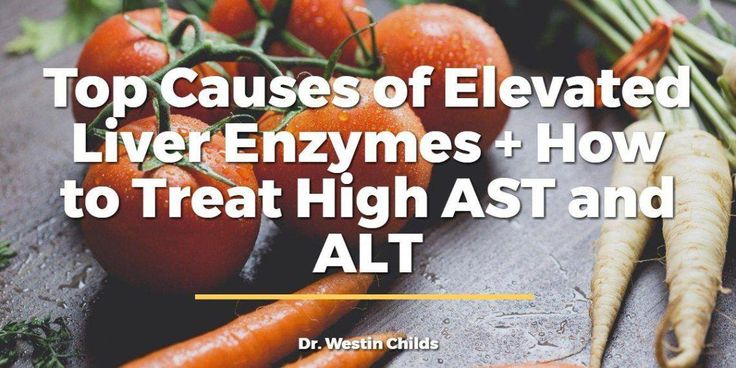 Liver enzymes also help control the levels of other chemicals your body produces and absorbs, as well as facilitate the excretion of waste products.
Liver enzymes also help control the levels of other chemicals your body produces and absorbs, as well as facilitate the excretion of waste products.
Your liver makes many different enzymes and ”helper molecules.” The most important liver enzymes are:
Aspartate transaminase (AST) (SGOT)
Alkaline phosphatase (ALP) (SGPT)
Alanine transaminase (ALT)
Gamma-glutamyl transferase (GGT)
Measuring the levels of these enzymes in your body can give your doctor an idea of how well your liver is functioning and can help determine the cause behind a number of different medical conditions. Blood tests often include testing of these liver enzymes to help them understand the state of your body.
The enzymes your liver creates help many different biological processes in your liver to operate normally, so when enzyme levels are abnormal, you may notice a range of different symptoms. The most common symptoms associated with abnormal enzyme levels are:
Abdominal pain
Dark urine
Light-colored stools
Yellowing of the eyes and skin (jaundice)
Loss of appetite
Inexplicable or unjustifiable fatigue
Liver function is a complicated system with many different enzymes and metabolites playing a role, each affecting others in different ways. As such, the cause of elevated liver enzymes can be one or more conditions.
As such, the cause of elevated liver enzymes can be one or more conditions.
Liver enzymes in the blood originate from living cells in your liver that have died, meaning elevated liver enzyme levels are a reflection of your liver health.
Some of the more common causes of elevated liver enzymes include:
Excessive alcohol consumption or substance abuse
Metabolic disorders such as stroke, heart failure, or heart attack
Autoimmune diseases like autoimmune hepatitis
Liver cancer
Significant inflammation of the muscles
Side effects of taking some medications
Celiac disease
Viral hepatitis, such as hepatitis B or C
COVID-19
Fatty liver disease
Cirrhosis
Your doctor can test your liver function by taking a sample of your blood and sending it off to the lab. In the lab, scientists will test the levels of liver enzymes found in your blood.
Liver function tests mainly look at AST, ALT, ALP, and GGT. The normal levels of these enzymes vary from person to person but should fall within a standardized range. Normal levels of these enzymes are:
AST: under 36 U/L
ALT: between 7 U/L and 56 U/L
ALP: between 20 U/L and 140 U/L
GGT: between 0-30 IU/L
Your doctor may also ask the lab to test your levels of albumin and bilirubin. These two proteins are involved in liver function and can provide good information about how well your liver is operating.
Stress is pretty unavoidable if you have work, children, or a partner, but there are many things you can do to help keep stress under control. Here are some of the best ways to control stress and, by doing so, support healthy liver function:
Take breaks from work or family when you need to. It doesn’t mean you don’t love them if you need some time away — interacting with others can be quite tiring.
 Take a few minutes or hours to center yourself and make some time to relax.
Take a few minutes or hours to center yourself and make some time to relax.Take care of your body by exercising when you can. Aim to get your heart rate up. The American Heart Association recommends at least 150 minutes of exercise per week.¹
Practice meditation or other mind-relaxing activities like reading a book. These short breaks from the hustle and bustle of everyday life can be a great way to manage stress.
Connect with others in your community by attending events such as potlucks or block parties. Interacting with others can be draining, but it can also be energizing if they are kind people who care about you.
Avoid alcohol or drugs, as they can promote a depressed state of mind and make it hard to keep calm when you’re stressed.
Make a routine to follow that encourages a calm and healthy mind. This can be simply having a few moments to enjoy your coffee in the morning or going for a short walk before bed.

Normalizing your liver enzyme levels when they are already elevated may not be easy, but it can be as simple as changing your diet and getting a bit more exercise. By getting your body sweating and your heart beating, you can help your body to recover from elevated liver enzyme levels.
Here are some ideas for changes to make when your liver enzyme levels are too high:
Exercise regularly: There is a wealth of evidence supporting regular exercise as a way to support healthy liver enzyme levels. Regular exercise can also help you feel more energetic, have a better mood, and feel more capable of dealing with stress and anxiety.
Eat more vegetables and less meat: While meat may be a tasty treat, it’s never a bad idea to boost the amount of vegetables in your diet. Leafy greens, crunchy carrots, and various fruits can all help a healthy body to flourish.²
Avoid processed and fast foods: Processed foods are made to last a long time without going bad, and while the excessive sugar and salt make the food taste good, these additives increase your chances of numerous diseases.

Drink coffee: You read that right — drinking coffee can help your liver stay healthy.
Stress and anxiety may cause your liver enzyme levels to get out of balance, but that’s not a reason to get too worried. A healthy diet of fruits and vegetables combined with good stress management can support healthy levels of liver enzymes.
If you are concerned about your liver enzyme levels, speak to your doctor.
What are liver enzymes?
Liver enzymes are proteins that your liver produces to help your body operate normally. They help digestion, regulate your blood and fat storage, and even help eliminate toxins from your body.
Can stress cause elevated liver enzymes?
Possibly. Eating a healthy diet rich in vegetables and fruits, as well as managing stress, can help you maintain healthy levels of liver enzymes.
What are the symptoms of elevated liver enzymes?
The more common symptoms associated with elevated liver enzymes are abdominal pain, dark urine, light-colored stools, jaundice, loss of appetite, and excessive fatigue.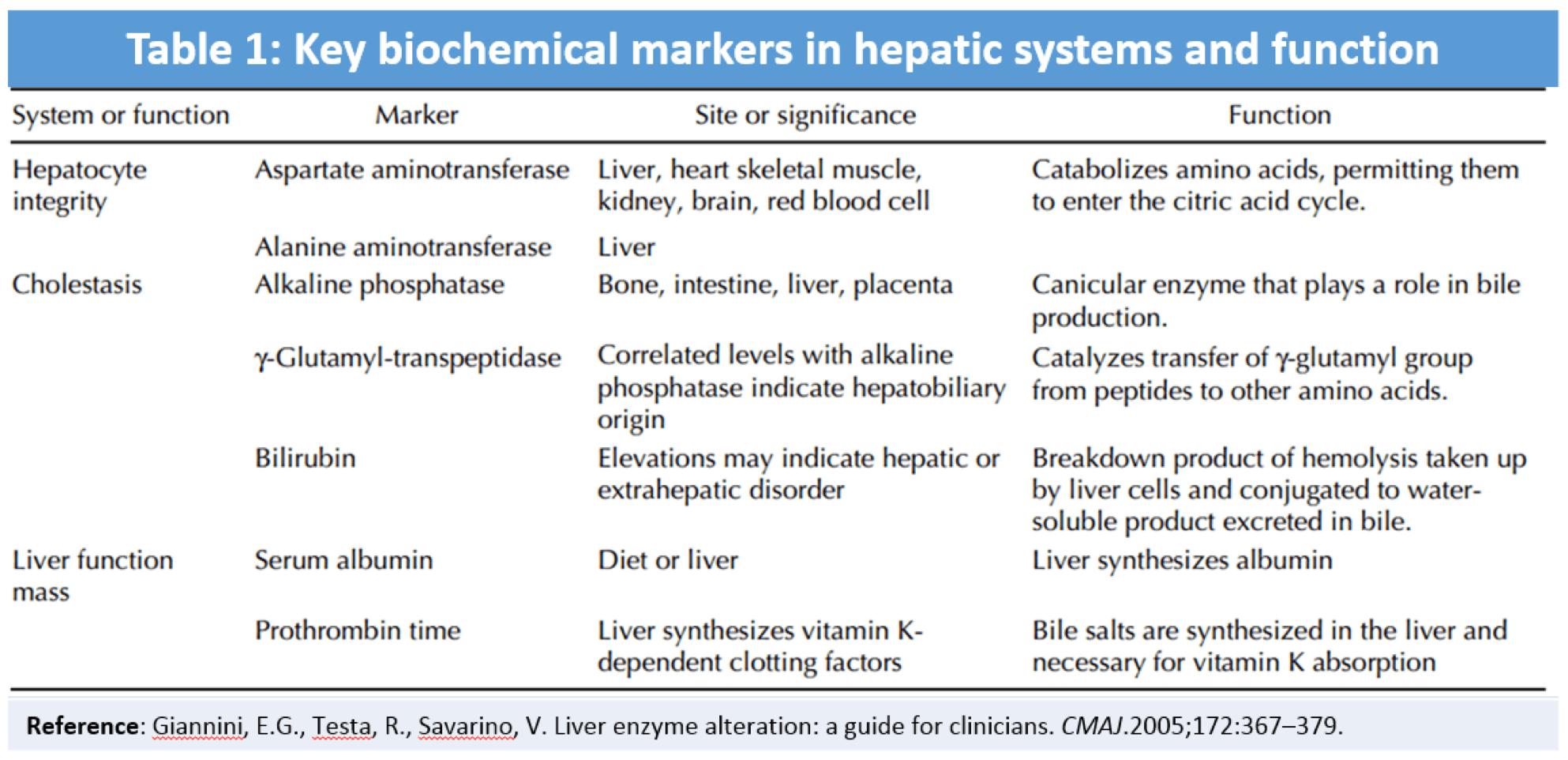
Why does a healthcare provider check liver enzymes?
Your healthcare provider may check your liver enzyme levels to get an understanding of how well your liver is operating. As your liver is responsible for removing toxins from your body, liver problems can contribute to a number of health conditions.
What are the risk factors for elevated liver enzymes?
Common risk factors for elevated liver enzyme levels include viral hepatitis (i.e., hepatitis B and C), heart failure, and drinking excess alcohol.
Biochemistry. Make an appointment at the Solntsevo clinic.
The site provides reference information. Adequate diagnosis and treatment
diseases are possible under the supervision of a conscientious physician.
Blood chemistry often uses activity determination
enzymes. What are enzymes? An enzyme is a protein molecule
which accelerates the course of biochemical reactions in the human body.
The term enzyme is synonymous with the term enzyme. Both of these are currently
Both of these are currently
terms are used in the same meaning as synonyms. However, science
studying the properties, structure and functions of enzymes is called enzymology.
What is amylase?
Amylase is produced by the pancreas and is involved in the breakdown
starch and glycogen to glucose. Amylase is one of the enzymes involved in
digestion. The highest content of amylase is determined in the pancreas
and salivary glands.
There are several types of amylase – α-amylase, β-amylase, γ-amylase, from
which the most widely used is the determination of α-amylase activity.
It is the concentration of this type of amylase that is determined in the blood in the laboratory.
Human blood contains two types of α-amylase – P-type and S-type. in the urine
65% of the P-type of α-amylase is present, and in the blood up to 60% is the S-type. P-type
α-amylase urine in biochemical studies is called diastasis, in order to avoid
confusion.
The activity of α-amylase in urine is 10 times higher than the activity of α-amylase in
blood.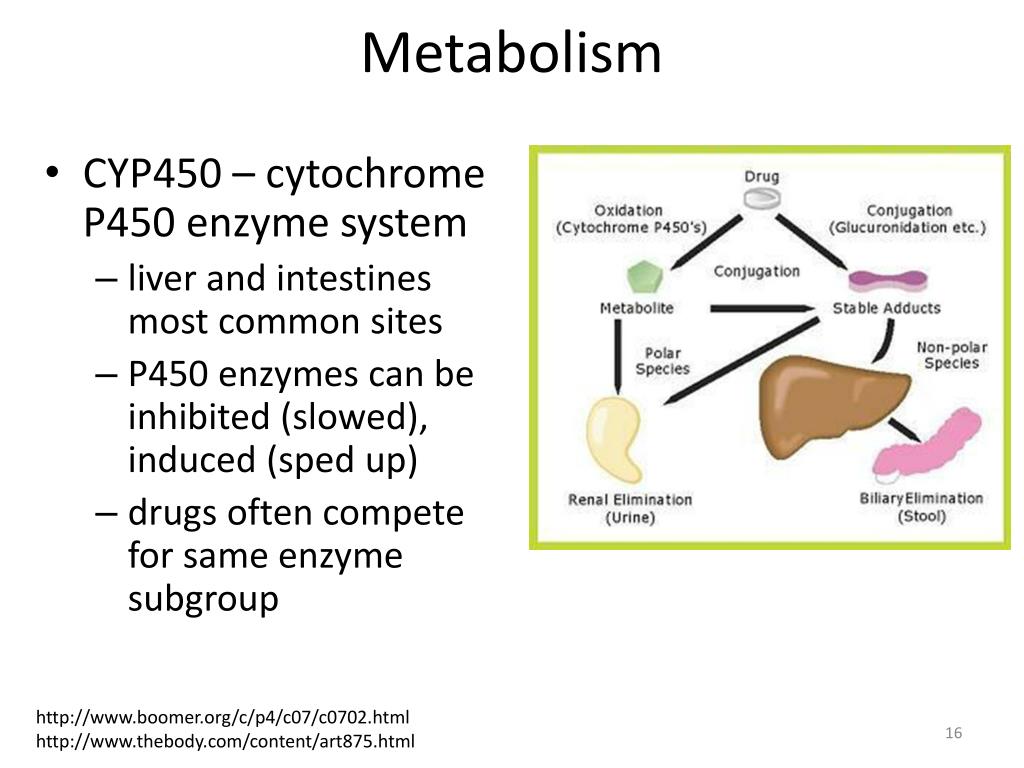 Determination of the activity of α-amylase and diastase is used for diagnosis
Determination of the activity of α-amylase and diastase is used for diagnosis
pancreatitis and some other diseases of the pancreas. At
chronic and subacute pancreatitis use the definition of activity
α-amylase in duodenal juice.
Blood amylase norm
name of analysis norm in µkatal/l units of measurement in U/l (U/l)
blood amylase activity: 16-30 µkatal/l 20-100 U/l
activity diastase ( amylase) urine: 28-100 mkatal / l up to 1000 U / l
Increased blood amylase
An increase in the activity of α-amylase in the blood is called hyperamylasemia, and
increased activity of urinary diastase – hyperamylasuria.
An increase in blood amylase is detected in the following conditions:
- at the beginning of acute pancreatitis, the maximum is reached
after 4 hours from the onset of the attack, and decreases to normal on 2-6 days from the onset
attack (an increase in α-amylase activity is possible by 8 times) - during exacerbation of chronic pancreatitis (in this case
α-amylase activity increases 3-5 times) - in the presence of tumors or stones in the pancreas
- acute viral infection – mumps
- alcohol intoxication
- ectopic pregnancy
When does an increase in amylase occur?
- An increase in the concentration of amylase in the urine develops in
the following cases: - in acute pancreatitis, there is an increase
activity of diastase by 10-30 times - bleeding from ulcers of the gastrointestinal tract
- in the treatment of sulfa drugs, morphine,
diuretics and oral contraceptives - in exacerbation of chronic pancreatitis activity
diastase increases 3-5 times - observed in inflammatory liver diseases
moderate increase in diastase activity by 1. 5-2 times
5-2 times - acute appendicitis
- cholecystitis
- intestinal obstruction
- alcohol intoxication.
With the development of total pancreatic necrosis, pancreatic cancer and
in chronic pancreatitis, α-amylase activity may not increase.
Decreased amylase in urine and blood
There are body conditions in which α-amylase activity can
decline. Low activity of urine diastase is detected in severe
hereditary disease – cystic fibrosis.
In the blood, a decrease in the activity of α-amylase is possible after an attack of acute
pancreatitis, with pancreatic necrosis, as well as with cystic fibrosis.
Although α-amylase is present in the kidney, liver and pancreas
gland, the determination of its activity is mainly used in the diagnosis
diseases of the pancreas.
Testing for amylase
To determine the activity of amylase, blood is taken from a vein, in the morning, on an empty stomach
or an average portion of morning urine. The day before the test, you must
The day before the test, you must
avoid fatty and spicy foods. In an acute attack of pancreatitis, blood from a vein and
urine is given regardless of the time of day. Currently, most
laboratories use enzymatic methods for determining the activity of amylase.
This method is quite accurate, highly specific and takes a short time.
time.
What is lipase?
Lipase is one of the digestive enzymes involved in
the breakdown of fats. For this enzyme to work, the presence of bile
acids and a coenzyme called colipase. Lipase is produced
various human organs – pancreas, lungs, leukocytes.
Lipase, which is synthesized in
pancreas. Therefore, the determination of lipase activity is used
mainly in the diagnosis of diseases of the pancreas.
Blood lipase norm
Blood lipase activity: 13 – 60 U/ml. In the urine of a healthy person, lipase
absent!
Lipase in pathology detection
pancreas
For the diagnosis of diseases of the pancreas, lipase is more
specific test than amylase because its activity remains normal
with ectopic pregnancy, acute appendicitis, mumps and liver disease.
Therefore, if pancreatitis is suspected, it is advisable
determine the activity of lipase and amylase at the same time. Increased activity of lipase
blood serum in acute pancreatitis is possible from 2 to 50 times relative
norms. To identify acute alcoholic pancreatitis, use
the ratio of the activity of lipase and amylase, and if this ratio is greater
2, then this case of pancreatitis is undoubtedly alcoholic
origin. An increase in the activity of amylase in the blood occurs after 4-5 hours
after an attack of acute pancreatitis, reaches a maximum after 12-24 hours and
remains elevated for 8-12 days. With the development of acute pancreatitis
serum lipase activity may increase earlier and more significantly,
than amylase activity.
Increased lipase in the blood
In what conditions does the activity of lipase in the blood serum increase:
- acute pancreatitis
- various tumors and tumor-like formations
pancreas - cholecystitis
- cholestasis
- ulcer perforation
- metabolic diseases – diabetes mellitus, gout,
obesity - medication (heparin, narcotic painkillers,
barbituric hypnotics, indomethacin).
Also, an increase in lipase activity is possible with injuries, wounds,
operations, fractures and acute renal failure. However, increased
lipase activity in these conditions is not specific to them,
therefore, it is not used in the diagnosis of these diseases.
Decrease in blood lipase level
Decrease in serum lipase activity observed in tumors
different localization (except for the pancreas), remote pancreas
gland, malnutrition or hereditary triglyceridemia.
Preparation for laboratory analysis
To determine the activity of lipase, blood is taken from a vein, in the morning, on an empty stomach.
The night before the test, you should not take fatty, spicy and
spicy food. In case of emergency, blood from a vein is donated to
independence from the time of day and previous training. Currently
to determine the activity of lipase, the immunochemical method is most often used
or enzymatic. The enzymatic method is faster and requires less
staff qualifications.
Alkaline phosphatase (AP)
Alkaline phosphatase (AP) is a membrane enzyme that
localized in the brush border of the bile canaliculi. ALP can be intestinal,
placental and nonspecific (in the tissues of the liver, kidneys and bones). This enzyme
is key in the exchange of phosphoric acid.
Blood alkaline phosphatase norm
Adults: 30-90 U/l
Adolescents: up to 400 U/l
Pregnant women: up to 250 U/l
The activity of alkaline phosphatase in the blood of healthy people increases (physiologist ical increase)
with an overdose of vitamin C, insufficiency of calcium and phosphorus in the food
diet, taking oral contraceptives, hormonal preparations of estrogen and
progesterone, antibiotics, sulfonamides, magnesia, omeprazole, ranitidine
And so on.
Alkaline phosphatase in diagnostics
diseases of the liver and biliary tract
The definition of
ALP activity in case of suspected liver disease.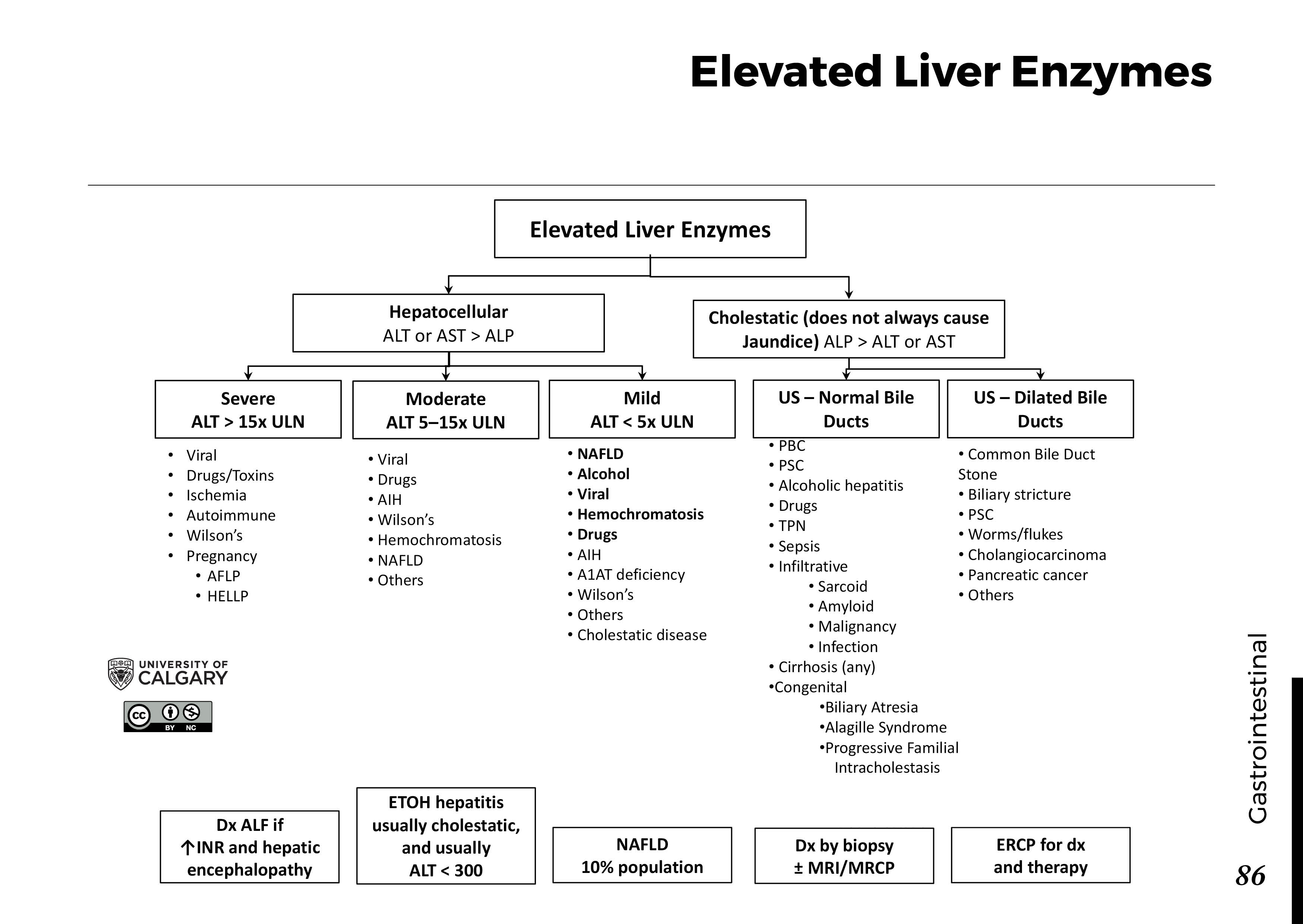 With obstructive jaundice
With obstructive jaundice
there is an increase in blood alkaline phosphatase activity by 10 times relative to the norm.
The definition of this indicator is used for laboratory confirmation
this form of jaundice. To a lesser extent, an increase in the activity of alkaline phosphatase
occurs with hepatitis, cholangitis, ulcerative colitis, intestinal bacterial
infections and thyrotoxicosis.
Alkaline phosphatase value at
diseases of bones and in traumatology
ALP is a marker enzyme of osteosynthesis, that is, it increases
activity in diseases of the bones or metastases of tumors in the bone, as well as in
fracture healing.
Causes of increased alkaline phosphatase
High ALP activity is detected in the following pathologies:
- obstructive jaundice
- bone tumors or bone metastases
- hyperthyroidism
- blood disorders (multiple myeloma,
lymphogranulomatosis, mononucleosis) - rickets
- destructive liver diseases (cirrhosis, cancer,
tuberculosis) - white infarcts (kidney, lung)
- amyloidosis
Causes of low alkaline
phosphatase
In addition to the high activity of alkaline phosphatase in the blood, there are conditions in which
enzyme activity is reduced. First of all, a similar phenomenon develops when
First of all, a similar phenomenon develops when
lack of zinc, magnesium, vitamins B12 or C (scurvy) in the diet. Low
blood alkaline phosphatase activity also accompanies the following pathological conditions
of the human body – anemia, insufficiency of the formation of the placenta with
pregnancy, hyperthyroidism, and disorders of growth and bone formation.
Testing for alkaline phosphatase
To determine the alkaline phosphatase activity, blood is taken from a vein, in the morning, on an empty stomach.
Compliance with a special diet is not required. It is necessary to pay attention to the fact that
some drugs can decrease or increase the activity of alkaline phosphatase, therefore
it is necessary to consult a doctor whether it is worth canceling the data intake
drugs for a short period of time. In modern laboratories
enzyme activity is estimated by the rate of the enzymatic reaction.
This method has high specificity, simplicity, reliability and does not
requires a lot of time for analysis.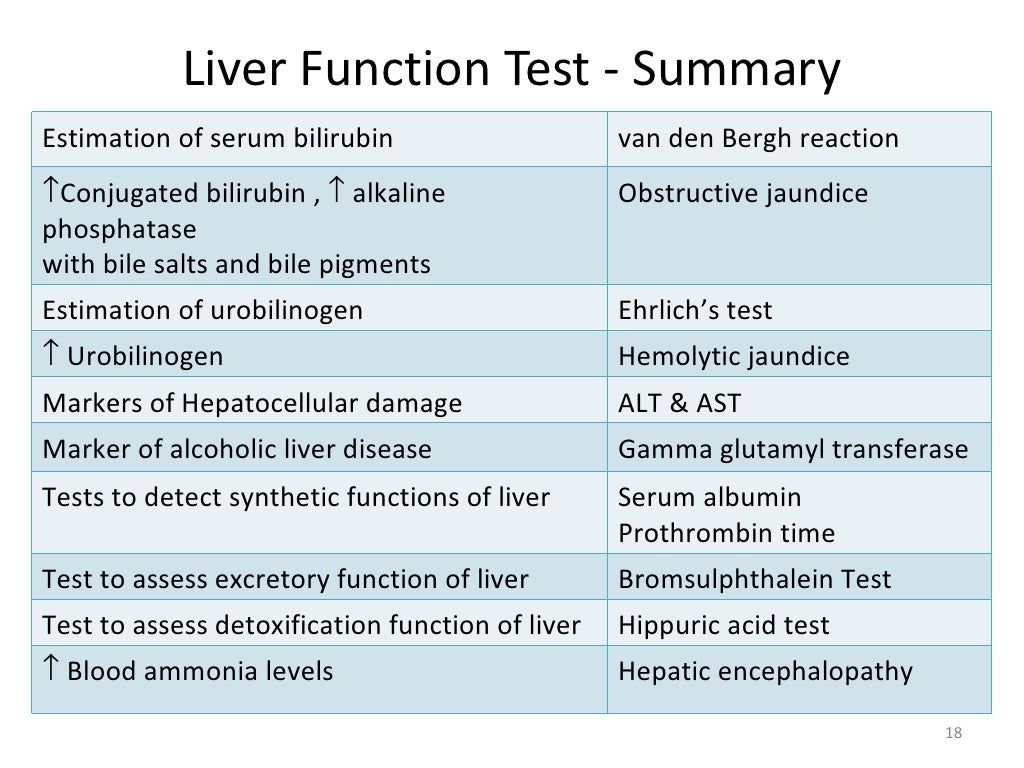
LDH enzyme
Lactate dehydrogenase (LDH) is an enzyme found in the cytoplasm
cells of the kidneys, heart, liver, muscles, spleen, pancreas.
The coenzyme of LDH is zinc ions and nicotinamide adenine dinucleotide (NAD). LDH
participates in the metabolism of glucose, catalyzing the conversion of lactate (lactic acid)
to pyruvate (pyruvic acid). There are five isoforms in serum
of this enzyme. LDH1 and LDH2 isoforms of cardiac origin, that is
found predominantly in the heart. LDH3, LDH4 and LDH5 – hepatic
origin.
Blood lactate dehydrogenase (LDH) norm
Blood LDH norms
Adults: 0.8-4 µmol/h*l 140-350 U/l
Newborns: 2.0-8 µmol/h*l 400-700 U/L
Diagnosis of LDH
determination of the activity of LDH isoforms. For example, in myocardial infarction
there is a significant increase in LDH1. For laboratory confirmation
myocardial infarction determine the ratio of LDH1 / LDH2, and if this ratio
greater than 1 means the person had a myocardial infarction. However, such tests are not widely
However, such tests are not widely
used because of their cost and complexity. Usually, the determination of the total
LDH activity, which is the sum of the total activity of all LDH isoforms.
LDH indicator in the diagnosis of infarction
Consider the diagnostic value of determining the total activity of LDH.
Determination of LDH activity is used for late diagnosis of infarction
myocardium, since an increase in its activity develops after 12-24 hours
after an attack and can remain at a high level for up to 10-12 days. This is very
an important circumstance in the examination of patients admitted to the medical
institution after the attack. If the increase in LDH activity is insignificant, then
we are dealing with a small focal heart attack, if, on the contrary, an increase in activity
long – it means that we are talking about an extensive heart attack. In patients with angina pectoris
LDH activity is increased in the first 2-3 days after the attack.
LDH index in hepatitis
Total LDH activity may increase in acute hepatitis (due to
increase in LDH4 and LDH5 activity). At the same time, the activity of LDH in the blood serum
At the same time, the activity of LDH in the blood serum
rises in the first weeks of the icteric period, that is, in the first 10 days.
Normal LDH
Possible increase in LDH activity in healthy people (physiological) after
physical exertion, during pregnancy and after taking alcohol. Caffeine,
insulin, aspirin, acebutolol, cephalosporins, heparin, interferon, penicillin,
sulfonamides also cause an increase in LDH activity. Therefore, when taking
of these drugs, it is necessary to take into account the possibility of increased activity of LDH,
which does not indicate the presence of pathological processes in the body.
Causes of elevated blood LDH
- In general, increased LDH activity in blood serum
can be detected in the following pathological conditions: - myocardial infarction
- acute hepatitis (viral, toxic)
- cirrhosis of the liver
- ovarian dysgerminomas)
- muscle injuries (ruptures, fractures, etc.
 )
) - acute pancreatitis
- kidney pathology (pyelonephritis, glomerulonephritis)
- hemolytic anemia, B12 deficiency and folate
deficiency anemia - leukemia
urea concentration).
How to get tested for LDH?
To determine the activity of LDH, blood is taken from a vein, in the morning, on an empty stomach.
There are no special diets or restrictions before taking the test. LDH is present in
erythrocytes, so the serum for the study must be fresh, without traces
hemolysis. Currently, LDH activity is most often determined by enzymatic
method that is reliable, specific and fast enough.
Alanine aminotransferase (ALT, ALT)
Alanine aminotransferase (ALT, ALT) is an enzyme related to
aminotransferases (transaminases), that is, carrying out the transfer of amino acids from
one biological molecule to another. Since the name of the enzyme
the amino acid alanine is present, which means that this enzyme transfers
the amino acid alanine. The coenzyme of AST is vitamin B6. ALT
The coenzyme of AST is vitamin B6. ALT
synthesized in cells, therefore, normally its activity in the blood is low.
Predominantly synthesized in liver cells, but also present in cells
kidneys, heart, muscles and pancreas.
Blood alanine aminotransferase (ALT / ALT) norm
for men: up to 40 U/l.
for women: up to 32 U/l.
An increase in ALT activity in healthy people (physiological) may be
caused by certain medications (antibiotics,
barbiturates, narcotics, anticancer drugs, oral contraceptives,
non-steroidal anti-inflammatory drugs, dicoumarins, echinacea,
valerian), strong physical exertion, injuries. Also high activity
ALT is observed in adolescents during a period of intensive growth.
ALT in the diagnosis of liver diseases
In the diagnosis of pathological conditions of the body, increased ALT activity
is a specific sign of acute liver disease. Raise
ALT activity in the blood is detected 1-4 weeks before the onset of symptoms of the disease
and 7-10 days before the appearance of the maximum level of bilirubin in the blood.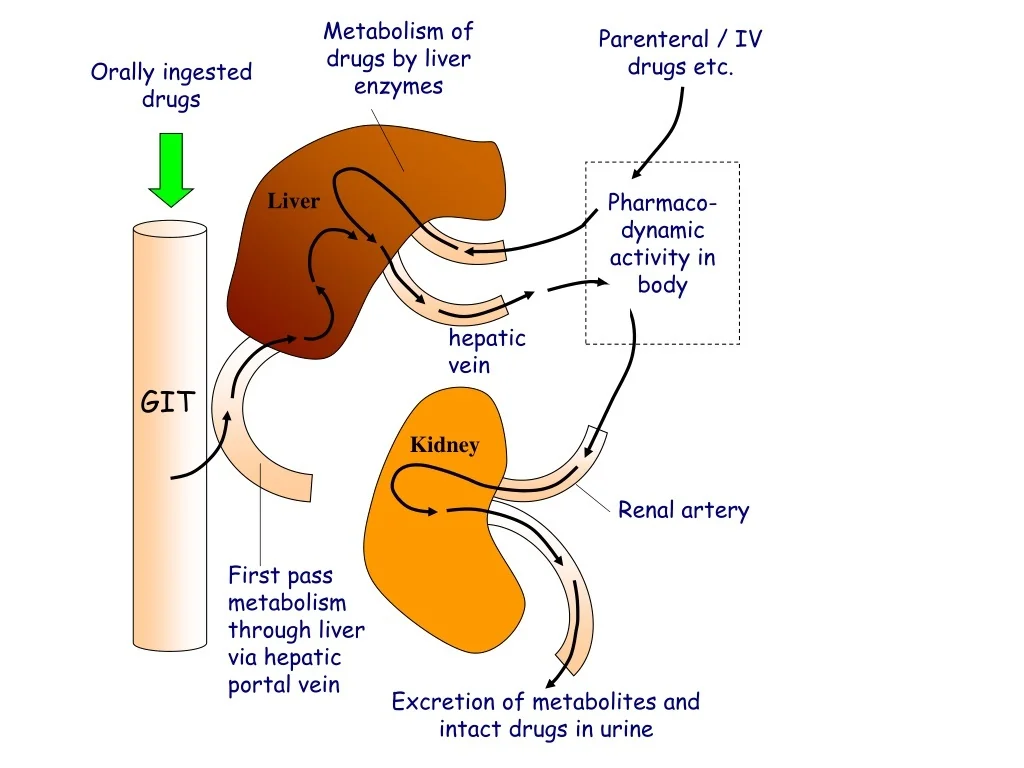 Increase
Increase
ALT activity in acute liver disease is 5-10 times. Increased
ALT activity for a long time or its increase in the later periods
disease indicates the onset of massive liver necrosis.
Why might the rate go up?
High blood ALT activity is detected in the presence of such pathologies:
- acute hepatitis
- cirrhosis
- obstructive jaundice
some antibiotics, lead poisoning) - decay of a large tumor
- liver cancer or liver metastases
- burn disease
- extensive myocardial infarction
- traumatic injuries of muscle tissue
In patients with mononucleosis, alcoholism, steatosis (hepatosis) who have undergone
heart surgery, there may also be a slight increase in ALT activity.
In severe liver diseases (severe cirrhosis, liver necrosis),
when the number of active liver cells is reduced, as well as with a deficiency
vitamin B6, a decrease in ALT activity is observed in the blood.
How to get tested for ALT (ALAT)?
Blood for determination of ALT activity is taken from a vein, in the morning, on an empty stomach.
No special diet is required. However, you should consult your doctor and
stop taking medications that cause a change for a few days
ALT activity. ALT activity is assessed by an enzymatic method, which
specific, quite easy to use and does not require a long and special
sample preparation.
Aspartate aminotransferase (AST, AST)
Aspartate aminotransferase (AST, AST) is an enzyme from the group of transaminases,
which carries out the transfer of the amino acid aspartate from one biological
molecules to another. The coenzyme AST is vitamin B6. AST is
intracellular enzyme, that is, it is normally found in cells. Enzyme in cells
may be present in the cytoplasm and mitochondria. The highest activity of AST
found in the heart, liver, muscles and kidneys. Mainly present in blood
cytoplasmic fraction of AST.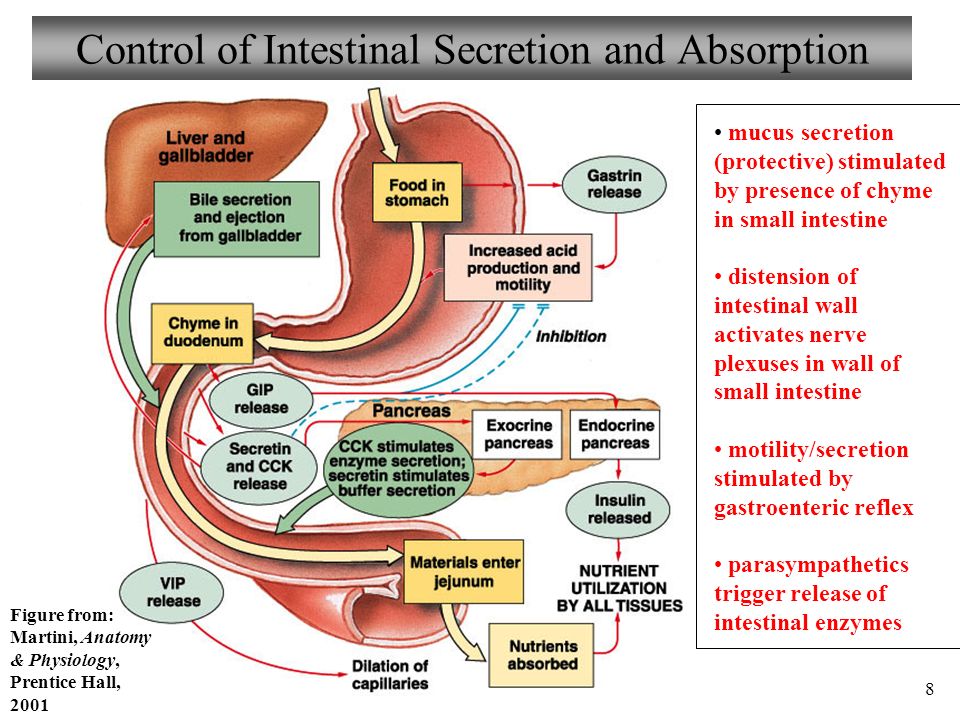
Aspartate aminotransferase (AST / AST) norm
Higher values of AST activity in healthy people are possible
(physiological) with excessive muscle loads, taking certain medications,
e.g. echinacea, valerian, alcohol, high doses of vitamin A, paracetamol,
barbiturates, antibiotics, etc.
AST/AST norm
for men: 15-31 U/l
for women: 20-40 U/l
Serum AST activity increases 4-5 times in myocardial infarction
and remains so for 5 days. If AST activity is kept high
level and does not decrease within 5 days after the attack, then this indicates
poor prognosis for a patient with myocardial infarction. If observed
even an increase in the activity of the enzyme in the blood, this fact indicates
expansion of the infarction zone.
In case of necrosis or damage to the liver cells, the activity of
AST. Moreover, the higher the activity of the enzyme, the greater the degree of damage.
An increase in blood AST activity occurs in the following cases: myocardial infarction
system (Duchenne’s myodystrophy)
there is an increase in AST activity. These conditions include burns,
These conditions include burns,
injury, heat stroke, poisoning with poisonous mushrooms.
Low AST activity is observed in vitamin B6 deficiency and presence of
extensive liver damage (necrosis, cirrhosis).
However, in the clinic, the determination of AST activity is mainly used for
diagnosing damage to the heart and liver. For other pathological conditions
enzyme activity also changes, but its change is not
specific, therefore, is not of high diagnostic value.
For the differential diagnosis of damage to the liver or heart, use
de Ritis coefficient. The de Ritis coefficient is the ratio of activity
AST / ALT, which is normally 1.3. Increasing the de Ritis ratio higher
1.3 is typical for myocardial infarction, and its decrease below 1.3 is detected when
liver diseases.
All about enzymes
Let’s consider what this complex structure is – an enzyme.
The enzyme consists of two parts – the actual protein part and the active center
enzyme. The protein part is called an apoenzyme, and the active center is called a coenzyme.
The protein part is called an apoenzyme, and the active center is called a coenzyme.
The whole enzyme molecule, that is, the apoenzyme plus the coenzyme, is called
holoenzyme. The apoenzyme is always represented exclusively by a protein of the tertiary
structures. Tertiary structure means that a linear chain of amino acids
is transformed into a structure of complex spatial configuration. coenzyme
can be represented by organic substances (vitamin B6, B1, B12, flavin,
gem, etc.) or inorganic (metal ions – Cu, Co, Zn, etc.). Actually
the acceleration of the biochemical reaction is produced precisely by the coenzyme.
The substance on which the enzyme acts is called the substrate, and the substance
resulting from the reaction is called the product. Often titles
enzymes are formed by adding the ending – aza to the name of the substrate.
For example, succinate dehydrogenase – breaks down succinate (succinic acid),
lactate dehydrogenase – breaks down lactate (lactic acid), etc. Enzymes
are divided into several types depending on the type of reaction they accelerate.
For example, dehydrogenases carry out oxidation or reduction, hydrolases
carry out the splitting of chemical bonds (trypsin, pepsin – digestive
enzymes), etc.
Each enzyme accelerates only one specific reaction and works in
certain conditions (temperature, acidity of the environment). The enzyme has an affinity
to its substrate, that is, it can work only with this substance. Recognition
“own” substrate is provided by apoenzyme. That is, the process of the enzyme
can be represented as follows: the apoenzyme recognizes the substrate, and the coenzyme
accelerates the reaction of the recognized substance. This principle of interaction was called
ligand – receptor or interaction according to the key-lock principle. So how
and an individual key fits the lock, and it fits the enzyme
individual substrate.
So, we have considered the main enzymes, the activity of which is determined in
biochemical analysis of blood. It should be remembered that the diagnosis cannot
be based only on laboratory data, it is necessary to take into account
anamnesis, clinic and data from other examinations.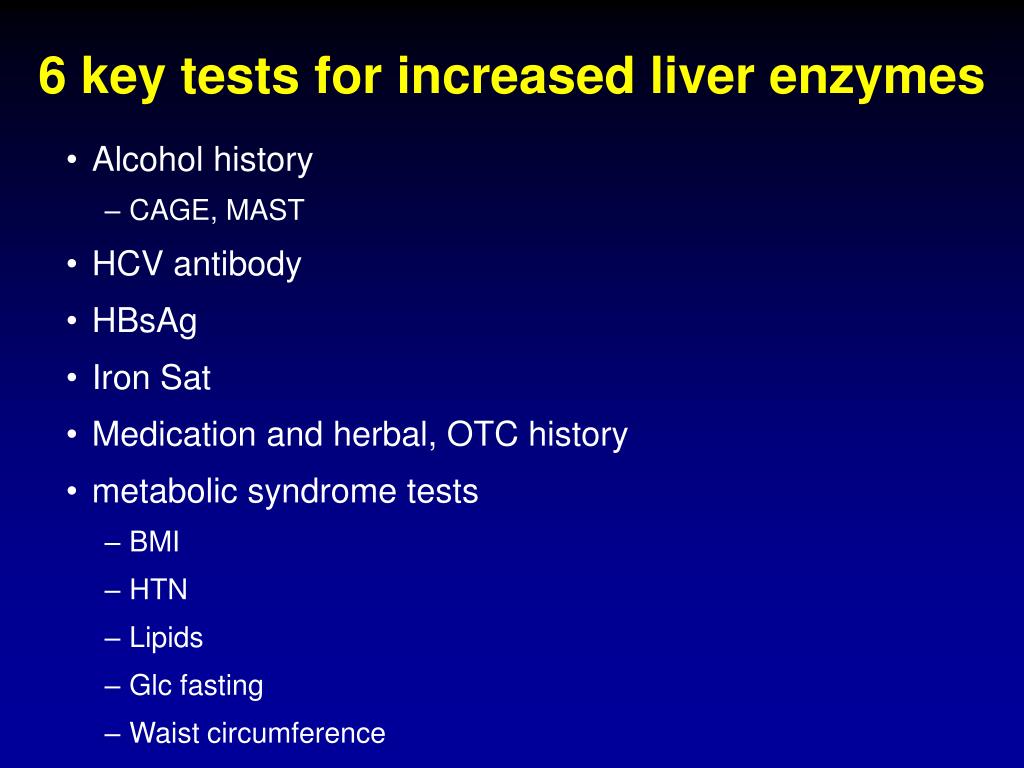 Therefore, the given data
Therefore, the given data
it is advisable to use for consultation, but if any
deviations from the norm should consult a doctor.
Pass the analysis of gamma-GT in the blood (Gamma-glutamyl transpeptidase) in Rostov-on-Don
Size:
AAA
Regular website
Appointment
Stock
- Shares
- About clinic
- Clinic structure
- Parent organizations
- News
- Articles
- Vacancies
- Licenses
- Legislative card
- Anti-stress therapy
- Gastroenterology
- Hematology-hemostasiology
- Gynecology
- Dermatovenereology
- Assisted reproductive technologies (ART)
- Cardiology
- Clinical Diagnostic Laboratory
- Coloproctology
- Mammology
- Neurology
- Department of Medical Cosmetology
- Otolaryngology (ENT)
- Rehabilitation medicine
- Rheumatology
- Traumatology-orthopedics
- Ultrasound Diagnostics
- Urology-andrology
- Phlebology
- Functional diagnostics
- Check-Up
- Endoscopy
- Endocrinology
- Doctors
- Patient
- Prices
- Analyzes
- Contacts
- org/Breadcrumb” itemref=”bx_breadcrumb_1″>
- Directions
- Clinical diagnostic laboratory
- Biochemical research
- Gamma-glutamyl transpeptidase (gamma-GT)
Main page
Jaundice is a common symptom in diseases of the liver and gallbladder. The mechanism of its appearance is explained by the stagnation of bile in the intrahepatic ducts, followed by absorption into the bloodstream. In addition to the clinical picture and instrumental diagnosis, when identifying the cause of jaundice, laboratory indicators are also used, one of which is gamma glutamyl transpeptidase.
What is gamma glutamyl transpeptidase?
This substance belongs to the class of enzymes.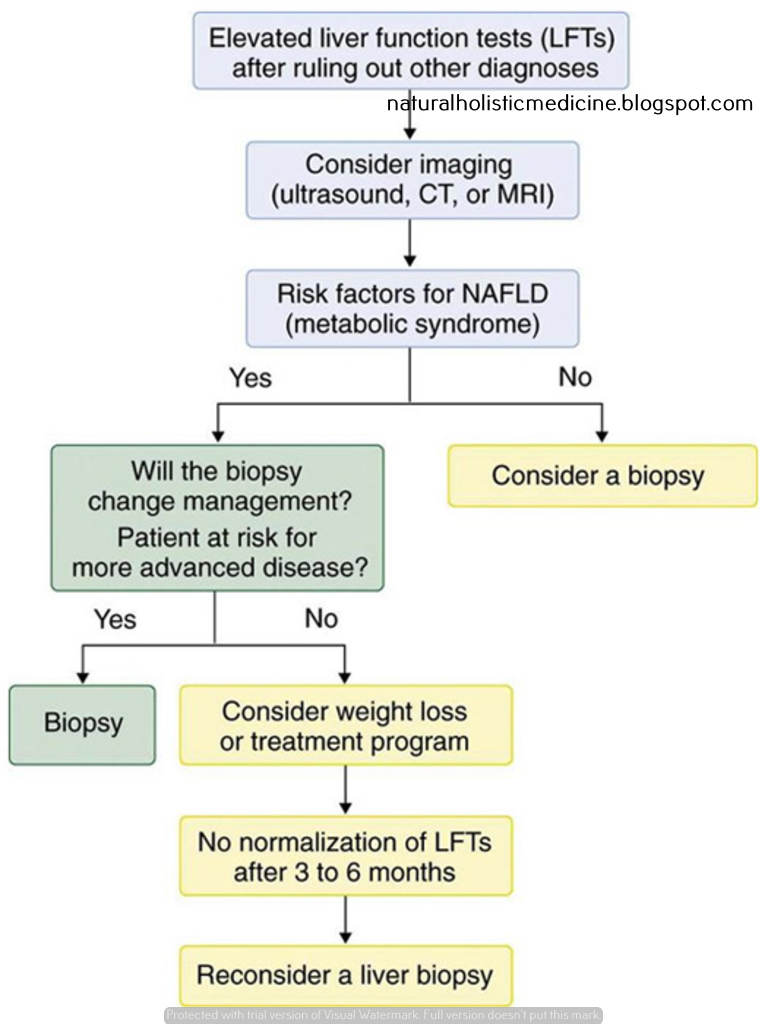 Its main function is the transfer of glutamate residues in the mitochondrial and outer membranes of the cells of the pancreas, kidneys and biliary tract. Clinically, if gamma glutamyl transpeptidase is elevated, this indicates the presence of cholestasis. Activation of the enzyme occurs in cirrhosis of the liver, infectious hepatitis, fatty hepatosis, various neoplasms and pathology of the biliary tract. Compared to other markers of the pathology of the hepatobiliary system (ALT, AST), gamma glutamyl transpeptidase has a higher sensitivity. Unlike other liver enzymes, GGT production is “triggered” by alcohol, so alcohol abusers can have increased activity even in the absence of liver disease. In addition, the production of GGT is stimulated by some drugs, including phenobarbital and paracetamol, so you can expect an increase in GGT without liver damage while taking them.
Its main function is the transfer of glutamate residues in the mitochondrial and outer membranes of the cells of the pancreas, kidneys and biliary tract. Clinically, if gamma glutamyl transpeptidase is elevated, this indicates the presence of cholestasis. Activation of the enzyme occurs in cirrhosis of the liver, infectious hepatitis, fatty hepatosis, various neoplasms and pathology of the biliary tract. Compared to other markers of the pathology of the hepatobiliary system (ALT, AST), gamma glutamyl transpeptidase has a higher sensitivity. Unlike other liver enzymes, GGT production is “triggered” by alcohol, so alcohol abusers can have increased activity even in the absence of liver disease. In addition, the production of GGT is stimulated by some drugs, including phenobarbital and paracetamol, so you can expect an increase in GGT without liver damage while taking them.
How to properly prepare for an examination?
The enzyme is very sensitive to external and internal factors.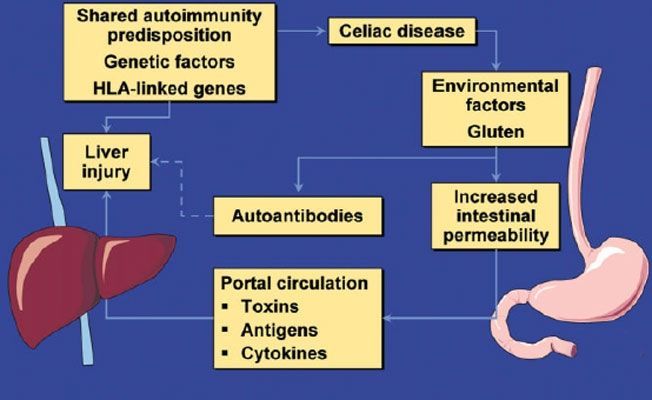

 Take a few minutes or hours to center yourself and make some time to relax.
Take a few minutes or hours to center yourself and make some time to relax.

 5-2 times
5-2 times
 )
)